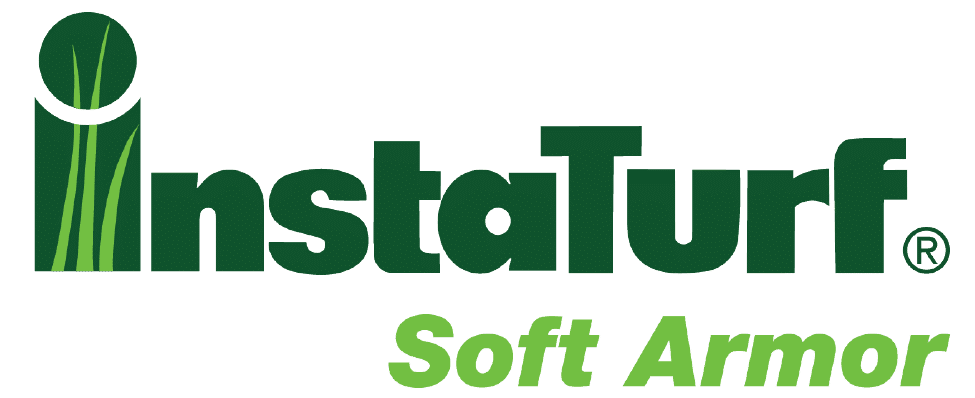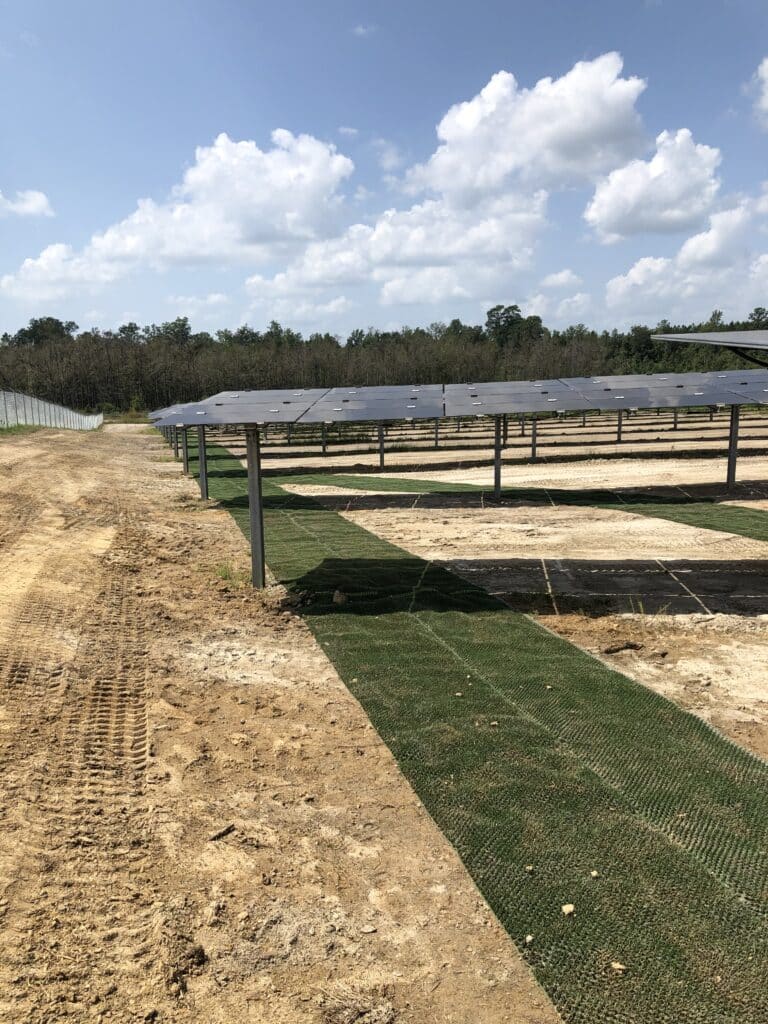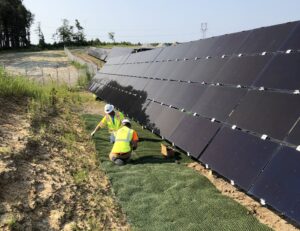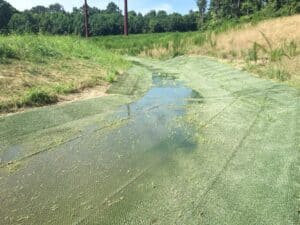As renewable energy accelerates toward ambitious milestones in the coming decades, solar energy remains a cornerstone in the transition to a carbon-neutral future. However, evolving regulations, technological advancements, and land-use challenges demand continuous innovation in solar siting and land management. In recent years, industry developments have increasingly emphasized environmental integration within solar farms, aligning energy production with ecological preservation. Addressing key challenges and leveraging innovative solutions will be crucial in shaping the harmony between solar development and environmental stewardship across North America.
The Evolving Solar Landscape
Solar energy has made remarkable strides, evolving from its early installations on prime agricultural lands to a sophisticated industry capable of harnessing diverse and challenging landscapes. Yet, with this progress comes pressing challenges. Regulatory inconsistencies, erosion risks, and the sustainable use of suboptimal land remain significant hurdles. These issues demand innovative approaches that align with both clean energy goals and ecological preservation. Initiatives like the 11-State Western Solar Plan, agrovoltaics, ecovoltaics, and advanced tools like the PV-SMaRT calculator and InstaTurf soft armor erosion control matting are paving the way for a future where solar energy and land stewardship coexist harmoniously.
Over the past few decades, solar farms have grown in scale and impact. Initially, they were sited on flat, agriculturally rich land that offered optimal sun exposure and easy construction. However, as land availability evolves, developers face increasing pressure to identify and utilize non-traditional sites—often on slopes, in regions with complex soils, or in areas with significant rainfall variability. Each of these conditions introduces unique challenges that require site-specific solutions. Meanwhile, communities, regulators, and developers are striving to ensure solar projects remain a positive force for sustainability, balancing energy production with land conservation.
Where We Are Now
The rapid growth of solar energy has illuminated gaps in siting practices and compliance. For example, a Virginia Department of Environmental Quality study revealed that nearly 70% of solar installations in Virginia faced significant stormwater management compliance challenges. Traditional solar farms, designed primarily for flat, agriculturally rich lands, often fail to address the unique demands of sloped or marginal terrains. These shortcomings not only hinder efficiency but also risk environmental degradation through increased runoff and erosion. Tackling these challenges is essential for meeting the ambitious clean energy milestones set for the coming decades.
Innovative solutions like ShearForce products by InstaTurf are redefining what’s possible in protecting solar farms from soil erosion. ShearForce products are hybrid-turf instant armor mats designed to protect panel driplines, drainage channels, and retention pond banks on solar farms. They provide a durable alternative to rock riprap, enabling the use of vegetation for long-term erosion control throughout a solar farm’s 30+ year lifespan. ShearForce instant armor mats provide immediate erosion protection to hold soil and seed in place, even under high shear stress and high velocity water flow. ShearForce stays in place long term to dramatically enhance the erosion resistance of the vegetation growing through their simulated turf structure. ShearForce-reinforced-vegetation offers solar farms a more cost-effective, environmentally and ecologically friendly alternative to “hard armor” erosion control solutions such as rock and concrete. Moreover, ShearForce products help developers ‘harness the chaos’ of meeting evolving regulatory requirements by offering a reliable, adaptable solution that aligns with both environmental initiatives and compliance standards. Its ability to protect soil and vegetation aligns with the industry’s increasing focus on sustainability and regulatory compliance.
As regulations evolve, developers must navigate a patchwork of state and local requirements that vary widely depending on geography and climate. For instance, managing runoff on sandy soils in Minnesota requires different strategies than preventing erosion on clay-rich slopes in Georgia. This variability underscores the need for adaptable, science-backed tools and technologies that can bridge these regional differences. By addressing these gaps, the solar industry has an opportunity to redefine its approach to environmental management, setting a standard for other sectors to follow.
Modern Thinking for Solar Farm Site
1. Agrovoltaics and Grazing
Agrovoltaics represents a groundbreaking integration of solar energy and agriculture. By elevating solar panels to accommodate agricultural activities such as grazing livestock, this approach optimizes land use and enhances sustainability. Grazing animals beneath solar arrays help to maintain vegetation, reduce soil compaction, and contribute to cost-effective land management. Agrovoltaics has demonstrated the potential to improve biodiversity and bolster agricultural productivity, creating a win-win scenario for energy and food production.
ShearForce hybrid-turf instant armor mats offer an agrovoltaic-friendly erosion control solution by effectively protecting the land while reinforcing and enabling vegetation to flourish. Their lightweight, yet highly durable design withstands foot traffic to ensure compatibility with grazing livestock and other agricultural activities beneath solar panels. By stabilizing soil and preventing erosion, it complements agrovoltaic practices, ensuring long-term land productivity.
2. Ecovoltaics and Pollinator Plans
Ecovoltaics focuses on the strategic incorporation of native vegetation and pollinator habitats within solar farm designs. This approach yields numerous benefits, including improved soil stability, enhanced water infiltration, and the creation of cooler microclimates that boost photovoltaic efficiency. Successful implementations in Minnesota demonstrate how ecovoltaic designs can restore biodiversity, proving that renewable energy projects can also serve as ecological sanctuaries.
ShearForce products can be used with native grasses and wildflowers to fit seamlessly into ecovoltaic designs, where supporting biodiversity is key. By stabilizing soil while allowing native plants and pollinators to thrive, ShearForce enhances the ecological value of solar farms. Its design supports pollinator-friendly habitats, contributing to wider conservation efforts while ensuring long-term site stability.
3. Lifecycle and Land Reuse
A forward-thinking perspective on solar farm development considers the entire lifecycle of the land. By planning for eventual decommissioning and restoration, developers can ensure that lands used for solar installations remain viable for agriculture, conservation, or other purposes post-project. This long-term approach addresses concerns about permanent land-use changes while enhancing the value and utility of the land over time.
Lifecycle planning also includes strategies to minimize the environmental footprint of solar installations during their operational phases. For example, using low-impact construction methods and maintaining vegetative ground cover can reduce soil disruption and support long-term land health. Additionally, involving local communities in the planning process ensures that decommissioning plans align with regional needs and priorities, fostering trust and collaboration between developers and stakeholders.
4. 11-State Western Solar Plan
The 11-State Western Solar Plan exemplifies a coordinated federal effort to streamline solar siting and permitting across diverse terrains. Administered by the Bureau of Land Management (BLM), the plan exclusively governs solar development on public lands under its stewardship. This focus on federal lands provides a clear framework for balancing the need for clean energy with the protection of cultural, historical, and natural resources.
One of the most significant outcomes of this plan is its signal to developers about the federal government’s priorities and standards for solar siting. By including features such as the 10% slope exclusion criterion to mitigate erosion risks and focusing on proximity to transmission lines to minimize environmental impact, the plan sets a robust example. While the guidelines directly apply to BLM lands, developers across various jurisdictions can draw confidence and inspiration from its principles, knowing they align with broader governmental trends.
The structured, transparent policymaking process behind this plan—involving public revisions and stakeholder input—enhances its credibility and potential influence. Developers who adhere to similar guidelines in other contexts may find increased acceptance among regulators and stakeholders. Furthermore, as a federal initiative, the 11-State Western Solar Plan reflects a comprehensive approach to addressing environmental and operational challenges, offering a scalable model for solar siting that other agencies and organizations can adapt.
5. PV-SMaRT Calculator
The Photovoltaic Stormwater Management Research and Testing (PV-SMaRT) calculator is a key innovation increasing the effectiveness of stormwater modeling for solar farms. By analyzing factors such as soil compaction, vegetative ground cover, and infiltration rates, this tool enables developers to design site-specific solutions that mitigate erosion and optimize stormwater management. For instance, solar projects on clay-rich soils in Georgia have successfully leveraged PV-SMaRT insights to reduce runoff and improve ecological outcomes.
In addition to its technical applications, the PV-SMaRT calculator serves as a valuable educational resource. By visualizing the potential impacts of different design choices, it helps developers and policymakers make informed decisions that balance environmental and economic considerations. As more stakeholders adopt this tool, it has the potential to standardize best practices across the industry, driving improvements in both project performance and environmental outcomes.
6. ShearForce products by InstaTurf
ShearForce hybrid-turf instant armor mats are redefining the landscape of erosion control in solar farm development. These innovative products represent a “soft armor” vegetative erosion control solution that bridges the gap between traditional, low-flow erosion control blankets (ECBs), turf reinforcement mats (TRMs), and environmentally disruptive “hard armor” systems like rock riprap. ShearForce products are uniquely positioned as the answer to modern erosion control needs, particularly in challenging terrains and under new solar siting guidelines while also aligning with modern agrovoltaic, ecovoltaic, and solar farm lifecycle initiatives.
Traditional turf reinforcement mats (TRMs) provide very limited erosion protection prior to vegetation establishment and often fail to hold soil and seed in place under heavy rainfall and water runoff. Such failures can be very expensive to repair and may result in even costlier damage to array infrastructure and potential violations of stormwater discharge regulations. On the other hand, ShearForce hybrid-turf instant armor mats, as the name implies, are engineered to immediately lock soil and seed in place under extremely high erosive forces, offering protection right out of the gate similar to 30-inch rock riprap. However, unlike rock riprap, ShearForce products’ patent-pending open simulated turf structure allows light and water to pass through it, enabling vegetation growth and promoting healthy ecosystems. This innovation fills a critical gap in the erosion control market, offering developers a durable yet environmentally conscious alternative.
The installation process further underscores the advantages of ShearForce products. Lightweight and easy to deploy, it can be rolled out with minimal machinery, reducing soil compaction and site disturbance. This makes it particularly well-suited for projects incorporating agrovoltaics and ecovoltaics, where maintaining soil health and fostering vegetation growth are essential. By protecting seeds and roots from erosion while seamlessly integrating into dual-use land strategies, ShearForce products enhance both ecological and operational outcomes.
ShearForce products align with the aesthetic and environmental goals of modern solar farms. By stabilizing soils and encouraging the growth of native vegetation, it helps create landscapes that harmonize with their natural surroundings. This dual functionality as a robust erosion control solution and an ecological asset makes ShearForce erosion control products an indispensable tool for the sustainable development of solar farms.
Looking Ahead
The future of solar energy lies at the intersection of innovation, environmental stewardship, and collaboration. As the industry evolves to meet ambitious clean energy targets, tools like the PV-SMaRT calculator and solutions like ShearForce products by InstaTurf will play pivotal roles in shaping the next generation of solar farm development. This cutting-edge product not only addresses critical challenges such as erosion control and stormwater management but also aligns with new regulatory frameworks and dual-use practices like agrovoltaics and ecovoltaics.
The 11-State Western Solar Plan provides a powerful example of how thoughtful, federally-driven policies can guide sustainable solar siting. This plan reflects a broader shift in how the federal government views the integration of renewable energy with environmental priorities. Developers who adopt similar principles on private or state lands may find greater alignment with emerging national standards, ensuring regulatory compliance and reducing project risks.
ShearForce erosion control products, in particular, represent a transformative advancement in erosion control. By bridging the gap between heavy-duty solutions like rock riprap and environmentally friendly practices, it empowers developers to create solar farms that are both durable and ecologically harmonious. Its ability to support vegetation growth while protecting against erosion makes it indispensable in projects that prioritize soil health and long-term land value.
As the industry looks forward towards ambitious milestones in the coming decades and beyond, the path forward requires a shared commitment to innovation and sustainability. Developers, policymakers, and communities must work together to adopt solutions that not only mitigate environmental impacts but also enhance the landscapes they occupy. By leveraging tools, policies, and cutting-edge products like ShearForce by InstaTurf, the solar energy sector can illuminate a sustainable future—one where clean energy and ecological preservation thrive hand in hand.
